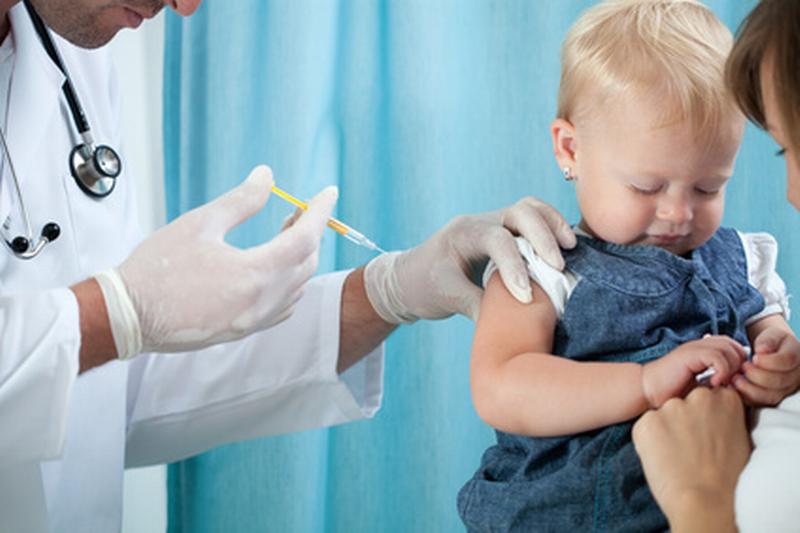This page has been automatically translated. Please refer to the page in French if needed.
Respiratory infection
A new preventive treatment available for bronchiolitis
Publié le null - Legal and Administrative Information Directorate (Prime Minister)
Bronchiolitis is a respiratory infection caused by a virus that is common during the fall and winter. This disease, which is benign in the majority of cases, particularly affects infants and children under 2 years of age. Since September 15, a new treatment to prevent severe forms of bronchiolitis can be provided free of charge to children under one year of age who are experiencing their first winter this year.

This new preventive treatment protects babies from the main virus that causes bronchiolitis. It is given as a single dose injection, ideally into the child’s thigh. Its protective effect is almost immediate and lasts for at least five months, i.e. throughout the epidemic season. It usually starts in early October, peaks in December and ends in January or even late February.
As part of the national bronchiolitis immunization campaign, the new treatment is intended for:
- all newborns, who can be given the injection before they are discharged from the maternity ward;
- infants born since 6 february 2023, because they were not exposed to respiratory syncytial virus (the main cause of bronchiolitis) in the previous outbreak season, and are therefore not yet protected against it. In such cases, the parents will need to obtain a medical prescription from a doctor or midwife. They will then have to place an order at a pharmacy or health facility, and the treatment will be delivered free of charge to them at no extra cost.
Treatment may be given by a doctor, nurse, or midwife.
FYI
this new preventive treatment was granted a marketing authorization valid throughout the European Union on 31 October 2022; and in France a favorable opinion from the High Health Authority on 1er August 2023 for his refund.
It is not a vaccine but a preventive monoclonal antibody therapy. This means that the body is given the tools to defend itself for a few months, unlike vaccination which introduces the disease to the body and trains it to defend itself.
What are the right things to do?
The Ministry of Health has also indicated several measures to protect babies from contamination:
- wash your hands before and after each change, feeding or hugging;
- regularly ventilate the entire dwelling;
- wear a mask if you have a cold, cough, or fever;
- avoid taking children to confined public spaces;
- not sharing bottles, soothers, or unwashed cutlery;
- do not smoke next to babies and children.
Bronchiolitis is most often a mild illness, but its symptoms are striking. It usually begins with a common cold or nasopharyngitis with a mild fever. Gradually, a dry cough appears; then a breathing discomfort occurs which results in rapid and wheezing breathing. At this stage of the disease, children may have difficulty eating and sleeping. Symptoms subside within a few days, and the child resolves in 8 to 10 days, but a residual cough may persist for up to a fortnight before resolving.
The first two days of illness require particularly close supervision in infants.
How is the disease transmitted?
Bronchiolitis, which is highly contagious, is transmitted in two ways:
- directly from person to person, because of sneezing, squabbling, coughing, or kissing;
- indirectly, by means of hands or objects soiled by saliva (toys, towels, bottles...)
Adults and older children who have respiratory syncytial virus, which causes bronchiolitis, usually have no signs or have only a cold. This makes many people unknowingly carriers of the virus and contagious.
Please note
the 2022-2023 winter epidemic of bronchiolitis was particularly intense and long in France. According to data from Santé publique France, the epidemic lasted 16 weeks (compared to an average of 12 weeks in the period 2015-2020). Each winter, bronchiolitis affects 30% of infants under 2 years of age, representing about 480,000 cases per year, and causes hospitalization in 2 to 3% of infants under 1 year of age.
Additional topics
Service-Public.fr
Ministry of Health
Ministry of Health
National Health Insurance Fund (Cnam)
Ministry of Health
National Health Insurance Fund (Cnam)
Agenda
Apprentissage
Jusqu'au 17 mai 2024
Publié le 03 mai 2024
Impôts
À partir du 11 avr. 2024
Publié le 11 avril 2024
Prévention Covid-19
À partir du 15 avr. 2024
Publié le 18 mars 2024
Calendrier scolaire
Du 6 avr. au 12 mai 2024
Publié le 15 mars 2024

